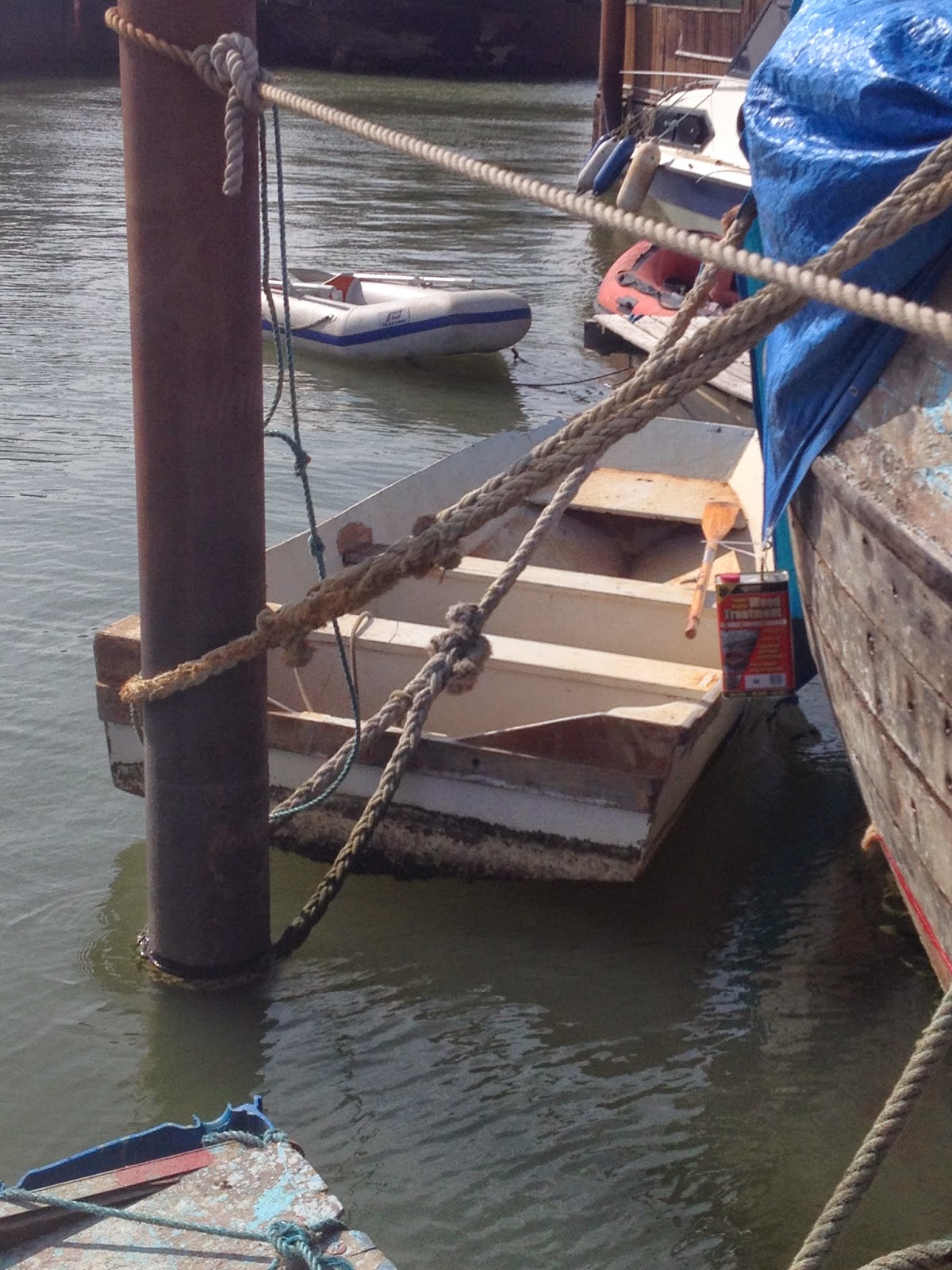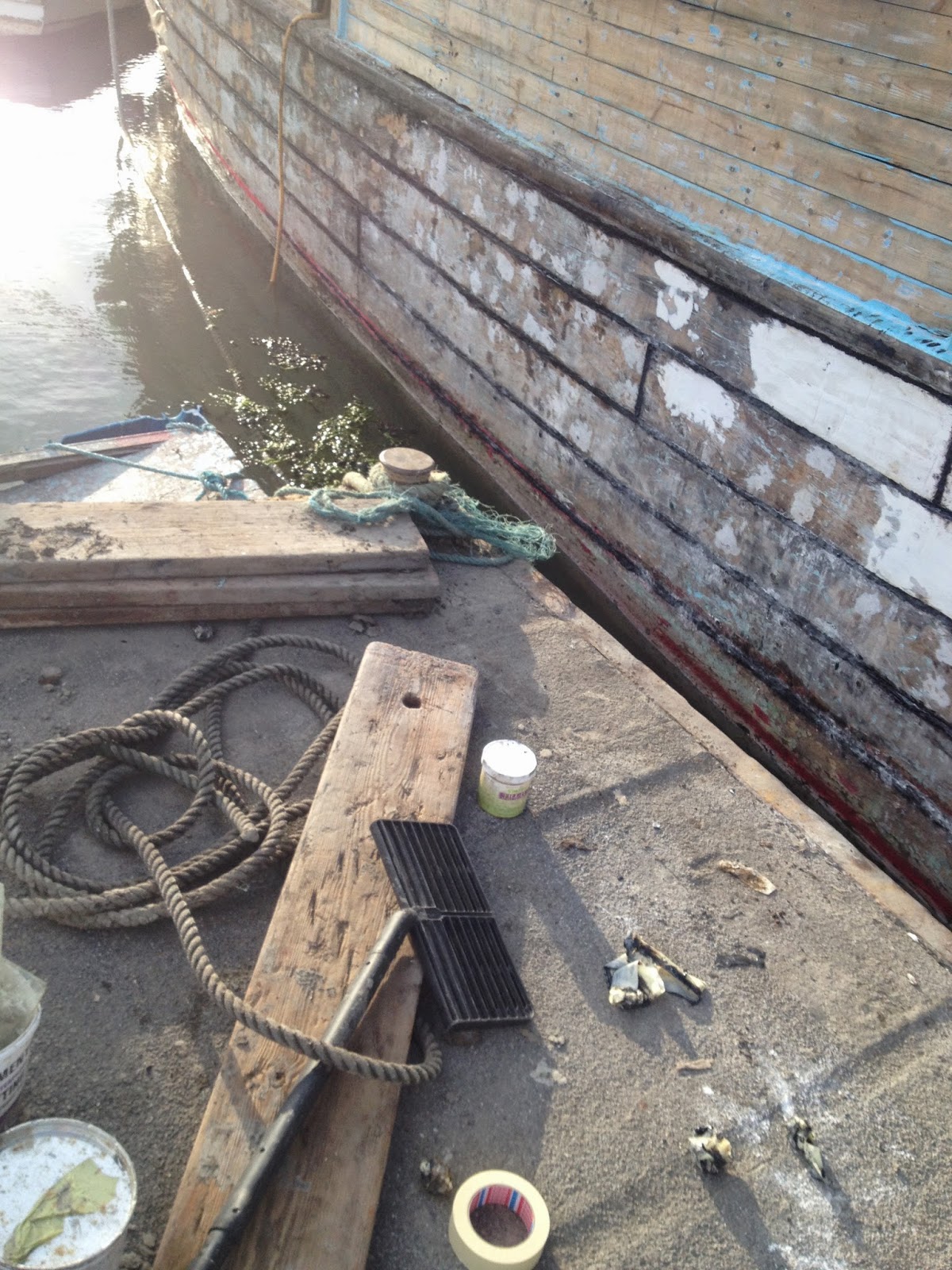We have now caulked and filled above the water line, we had 16 kilos, four bundles, of Oakum already on the boat when we bought it and we have just received an order of another 12 kilos, we estimate we have used roughly 15 kilos to caulk the most exposed side.
Nearly every bolt had rusted through and had to be dug out vactaned, to stop any future rust we then coated in CPES and filled, the seams were all reefed and then strengthened with CPES caulked, primed and filled with our own black pudding, Isoflex and portland cement..
A logistical nightmare with the tide and mud to contend with, we ended putting three planks together with a long piece of string attached to all three this way the weight of the three planks sank sufficiently to leave a plank to work on when the tide comes in the planks were pulled back onto the pontoon.
A few pictures of the process
Black Pudding
The mix
seperate tub of cement, makes the black pudding easier to work with, break of a piece put it in the cement and knead like bread dough to create more of a putty.
Does what it says on the tin.
Masked up ready to be filled
Don't leave the tape to dry with the black pudding, once in remove the tape and tidy up any pulled areas.
Sanded, reefed, caulked and filled a coat of primer over the black pudding then a good coat of CPES and we are ready to paint.
The black pudding can be sanded flush without any staining to the primer, a downside to the original tar and cement mix favoured by old ship builders.
Sanded seam
We marked the water line by using a long pole with a paint brush attached and pulled the pontoon along the length of the boat marking the line as we passed, we can now start to antifoul, we have decided to go with EU45 antifoul, 45% copper mix, Stewart from EU45 has been down to the boat to help out with marking the water line and applying the paint between tides.




































